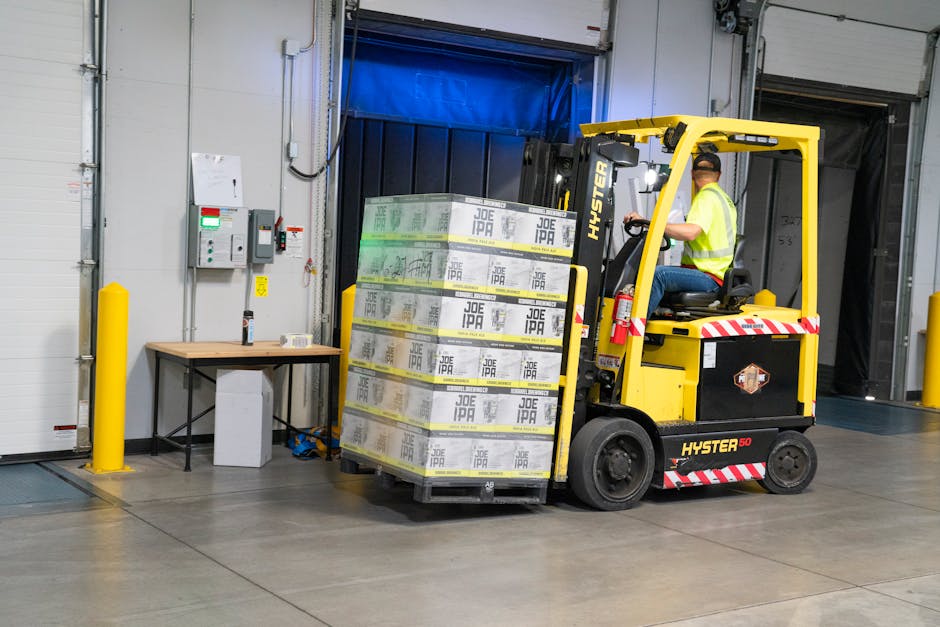Key Takeaways
- Cost Reduction: Third-party fulfilment centres convert fixed warehouse expenses into scalable operating costs, with studies showing that a significant percentage of businesses experience reduced operating expenses.
- Time Liberation: Outsourcing fulfilment eliminates the burden of managing warehouse staff (with turnover rates often exceeding 40% annually) and allows focus on core business growth activities.
- Scalability Without Risk: Handle seasonal peaks and market expansion without capital investment, accessing advanced technology and expertise impossible to build in-house.
- Strategic Advantage: Businesses gain access to bulk shipping discounts, regional distribution networks, and automated systems that significantly improve customer satisfaction rates.
Managing order fulfilment internally often becomes a significant drain on resources as e-commerce businesses grow. What starts as a manageable process in spare rooms or small warehouses quickly transforms into a complex operation requiring substantial investment in infrastructure, technology, and personnel. The solution lies in partnering withthird-party fulfilment centres that specialise in these operations.
How Third-Party Fulfilment Services Dramatically Reduce Business Costs
The financial impact of switching to third-party fulfilment extends far beyond simple cost comparison. Studies indicate that a significant percentage of businesses using third-party logistics providers experience a reduction in operating costs, primarily through economies of scale that individual businesses cannot achieve independently.
Third-party providers use their combined client volume to negotiate significantly better rates across all aspects of fulfilment. This includes everything from packaging materials purchased in bulk to shipping rates that reflect the collective volume of hundreds or thousands of businesses rather than individual company shipments.
Transform Fixed Warehouse Expenses Into Scalable Operating Costs
The most significant financial transformation occurs when businesses convert their fixed infrastructure costs into variable expenses that scale with actual business performance. This fundamental shift provides both immediate cost relief and long-term financial flexibility.
1. Eliminate Warehouse Infrastructure Investment
Warehouse space represents one of the largest fixed costs for growing e-commerce businesses. Beyond the initial capital requirements for leasing or purchasing facilities, businesses must invest in racking systems, climate control, security systems, and loading dock infrastructure. These investments typically require multi-year commitments regardless of actual inventory levels or order volumes.
Third-party fulfilment centres eliminate these capital requirements entirely. Businesses pay only for the space they actually use, when they use it, explains Edinburgh-based Dimensions Fulfilment. During slower periods, storage costs decrease proportionally, whilst peak seasons don’t require additional infrastructure investment.
2. Convert Staffing Costs to Usage-Based Fees
Warehouse staffing presents ongoing challenges beyond simple payroll costs. Warehouse worker turnover rates often exceed 40% annually and can be higher during peak seasons, creating constant recruitment, training, and productivity loss cycles. Additionally, businesses must maintain staffing levels capable of handling peak demand periods, even when those peaks represent only a fraction of the operational year.
Fulfilment centres absorb these staffing challenges entirely. Their specialised workforce management systems, combined with technology-driven processes, maintain consistent productivity levels whilst eliminating client responsibility for hiring, training, benefits, workers’ compensation, and employment law compliance.
3. Access Bulk Shipping Discounts Through Shared Volume
Individual businesses struggle to negotiate competitive shipping rates due to limited volume. Third-party fulfilment centres combine shipments from multiple clients to achieve volume discounts that can reduce shipping costs by substantial margins. These providers can negotiate better dimensional weight rates with carriers, reducing the impact of lightweight but bulky items on shipping expenses.
The shared volume approach also provides access to premium shipping services at standard rates, enabling businesses to offer expedited delivery options that would otherwise be cost-prohibitive.
Free Up Your Time for Core Business Growth Activities
The time investment required for effective fulfilment operations extends far beyond the obvious picking and packing activities. Successful fulfilment requires inventory management systems, quality control processes, returns handling, carrier relationship management, and continuous process optimisation.
Avoid High Warehouse Worker Turnover Above 40% Annually
Managing warehouse staff represents one of the most time-intensive aspects of internal fulfilment operations. The industry’s high turnover rates create constant recruitment cycles that divert management attention from strategic business activities. Each new hire requires training on specific products, processes, and safety protocols, whilst experienced workers command increasingly higher wages in competitive labour markets.
Third-party fulfilment centres maintain experienced teams with established training programmes and career advancement opportunities that reduce turnover significantly. Their specialisation in workforce management means they can maintain consistent service levels despite individual staff changes.
Focus on Sales Instead of Logistics Management
Successful e-commerce businesses require intense focus on product development, marketing strategy, customer acquisition, and market expansion. When management attention diverts to operational logistics, these core growth activities suffer. The complexity of modern fulfilment—including multi-channel inventory management, same-day delivery expectations, and sophisticated returns processing—demands expertise that takes years to develop internally.
Outsourcing fulfilment operations allows leadership teams to concentrate entirely on revenue-generating activities. Marketing campaigns, product launches, partnership development, and strategic planning receive the attention they require for sustainable business growth.
Scale Effortlessly During Peak Seasons and Market Expansion
Business growth creates fulfilment challenges that compound rapidly. Doubling order volume doesn’t simply require twice the picking capacity—it demands proportional increases in inventory management sophistication, quality control systems, and shipping coordination capabilities.
Handle Holiday Rushes Without Infrastructure Changes
Seasonal demand fluctuations create operational nightmares for businesses managing internal fulfilment. Black Friday, Christmas, and other peak periods can increase order volumes by 300% or more, requiring temporary staff increases, extended operating hours, and additional equipment rental. When demand normalises, businesses face the challenge of reducing capacity whilst maintaining service levels.
Third-party fulfilment centres design their operations specifically for these fluctuations. Their infrastructure, staffing models, and technology systems accommodate dramatic volume changes without service degradation. Peak season preparation becomes their responsibility, not their clients’.
Enter New Markets With Zero Capital Risk
Geographic expansion traditionally requires significant infrastructure investment before revenue potential becomes clear. Establishing distribution centres in new markets involves lease commitments, staff hiring, and system implementations that create substantial financial exposure if market entry fails.
Third-party fulfilment networks enable market testing with minimal commitment. Businesses can establish presence in new regions through existing fulfilment centre networks, evaluating market response before making permanent infrastructure investments. Failed market entries require no asset disposal or lease termination costs.
Maintain Optimal Stock Levels to Prevent Stockouts
E-commerce businesses face constant stockout challenges, and should aim to maintain stockout rates below 5% to ensure high customer satisfaction. These stockouts directly impact revenue whilst damaging customer relationships and search engine rankings.
Professional fulfilment centres employ sophisticated inventory management systems that track stock levels across multiple channels, predict demand patterns, and provide automated reordering alerts. Their expertise in inventory optimisation helps businesses maintain adequate stock levels without excessive carrying costs.
Advanced Technology and Expertise You Can’t Build In-House
Modern fulfilment requires technology investments that extend far beyond basic inventory tracking. Warehouse management systems, automated sorting equipment, integration capabilities with multiple e-commerce platforms, and sophisticated reporting tools represent millions of pounds in development and implementation costs.
Automated Returns Processing for Customer Satisfaction
Returns processing significantly impacts customer satisfaction levels, yet most businesses handle returns as manual, time-intensive operations. Studies indicate that 86% of shippers say that using a 3PL helps improve customer service largely due to professional returns handling capabilities.
Advanced fulfilment centres employ automated returns processing that includes return authorisation systems, automated inspection processes, inventory restoration workflows, and customer communication systems. These capabilities ensure returns processing speed that maintains customer satisfaction whilst minimising inventory loss.
Regional Distribution Centres for Faster Delivery
Customer expectations for delivery speed continue to escalate, with same-day and next-day delivery becoming standard rather than premium services. Meeting these expectations requires inventory positioning close to major population centres, which demands multiple distribution facilities across different regions.
Established fulfilment networks provide instant access to regional distribution capabilities that would take years and significant capital to develop independently. Products stored closer to customers reduce delivery times whilst lowering shipping costs through shorter transit distances.
Which Businesses Benefit Most From Third-Party Fulfilment
Third-party fulfilment offers advantages across various business models, certain company types experience the most dramatic improvements in operational efficiency and cost management.
1. E-commerce Retailers With Fluctuating Order Volumes
Businesses experiencing significant seasonal variations or unpredictable demand spikes struggle most with internal fulfilment capacity management. E-commerce retailers selling gift items, seasonal products, or trend-driven merchandise often see order volumes that vary by 500% or more between peak and slow periods.
These volume fluctuations make fixed infrastructure investments particularly inefficient. During slow periods, warehouse space and equipment sit underutilised, whilst peak periods strain capacity beyond reasonable limits. Third-party fulfilment provides the flexibility to handle these variations without infrastructure investment or service degradation.
2. Subscription Box Services Requiring Complex Delivery Waves
Subscription box businesses face unique fulfilment challenges that extend beyond traditional e-commerce operations. These companies must coordinate delivery waves that ensure thousands of customers receive shipments within specific timeframes, often requiring complex inventory kitting and customised packaging processes.
The coordination required for subscription fulfilment—including inventory procurement timing, assembly scheduling, and delivery coordination—demands expertise that most businesses cannot develop cost-effectively. Specialised fulfilment centres understand these unique requirements and maintain systems specifically designed for subscription-based fulfilment.
3. Sellers of Heavy or Temperature-Sensitive Products
Products requiring special handling, climate control, or freight shipping create fulfilment challenges that demand specialised facilities and expertise. Businesses selling furniture, appliances, pharmaceuticals, or perishable goods often require warehouse capabilities that extend far beyond standard e-commerce fulfilment.
Specialised fulfilment centres maintain climate-controlled environments, freight shipping relationships, and handling equipment necessary for these challenging products. They understand regulatory requirements for temperature-sensitive items and maintain the insurance coverage necessary for high-value products.
Choosing The Best Fulfilment Partner to Transform Your Operations
Selecting the right fulfilment partner requires careful evaluation of capabilities that extend beyond basic warehousing services. The ideal partnership provides technology integration, scalability options, geographic coverage, and industry expertise that align with specific business requirements.
Successful fulfilment partnerships begin with clear understanding of current operational challenges and future growth objectives. Businesses should evaluate potential partners based on their ability to integrate with existing systems, provide transparent pricing structures, and demonstrate expertise in relevant industry requirements.
Technology integration capabilities deserve particular attention, as seamless data flow between e-commerce platforms and fulfilment systems directly impacts customer experience quality. The best fulfilment partners provide real-time inventory visibility, automated order processing, and detailed reporting that support informed business decisions.


